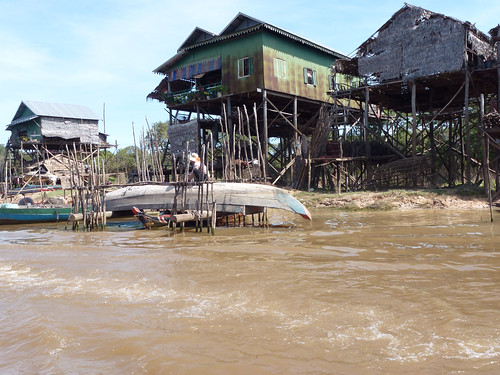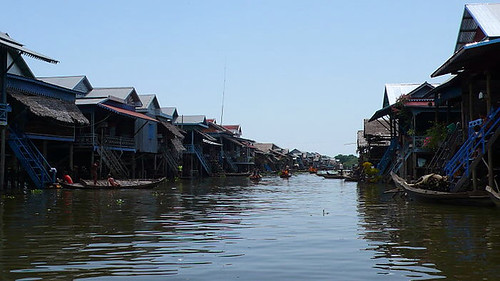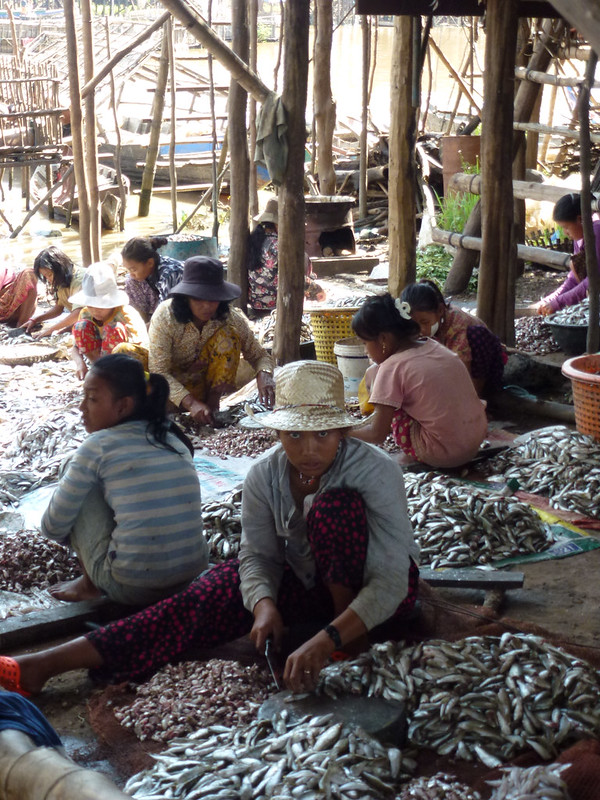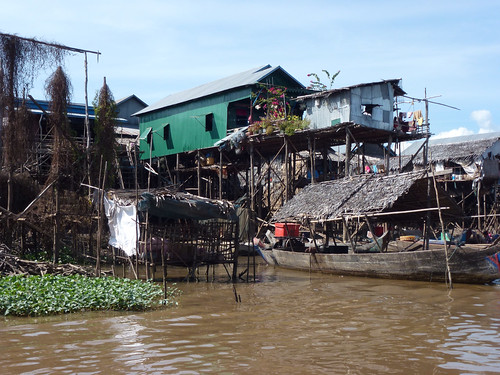This raises several problems and opportunities for the villagers. We went on a trip to Kompong Phluk which is about 25 km south of Siem Reap. We had just entered the dry season so the waters had begun to recede 3-4 weeks ago.
The main problem they face is to build their houses high enough to avoid the flooded lake, but close enough to the shrunken lake to fish it. So the houses are built on sticks. The photo below shows a newer house ( with corrugated metal ) next to an old bamboo house. The villagers have to build any new houses from metal as fire protection , even though they are much hotter. A couple of years ago a fire burned down 50 or so houses hence the change in materials.
The main opportunity is food. The swollen lake brings with it lots of fish to eat. And as it recedes the exposed lake bank is very fertile and the villagers get to grow several crops of rice and vegetables whilst the land is exposed.
Below is the Main Street in Kompong Phluck. It's now above water and has been for 2 weeks . The town is1 big street with these houses side by side.
This is a picture taken in the wet season a couple of months ago ( not by me of course)
It's fascinating wandering around the village looking at how it works. As you can imagine its almost a 'bee like community' with people working together for the community. Under 1 house was a noisy smokey generator charging 50 or 60 car batteries - which they use to power their tvs. Not to good if your house has the generator under it.
When we went it was Sunday so the children were not at school . Kids go to school 6 days a week either 8am to 12 or 1 to 5 pm. So the kids in the picture below we're chopping the heads and tails off the small fish. The fish bodies were eaten by the villagers. The heads and tails were mashed into a pulp and fed to the pigs. The villagers don't get to eat the pigs as they are too valuable. They get sold or traded for commodities the village wants. Pork is only eaten on special occasions .
In the photo below you can see the lake is still lapping at the edges of these houses. The greenery is morning glory which is being grown as a vegetable for the villagers to share. And in the foreground if you zoom in on the wooden cage you will see some pigs who are being fed the fish pasteWe really enjoyed the trip. Fascinating to see the village life which hasn't changed since the 8th century. This village is close to Rolous , where wevisited the local market. Rolous has been continuously occupied since the 8th century. Mind you it's only the temples which date it - these temples were built before the King moved the capital city to Angkor- as the houses are wooden shacks!





No comments:
Post a Comment